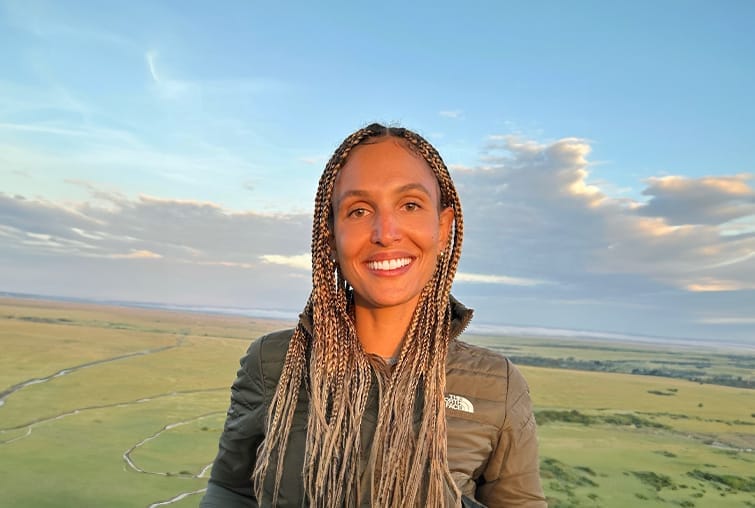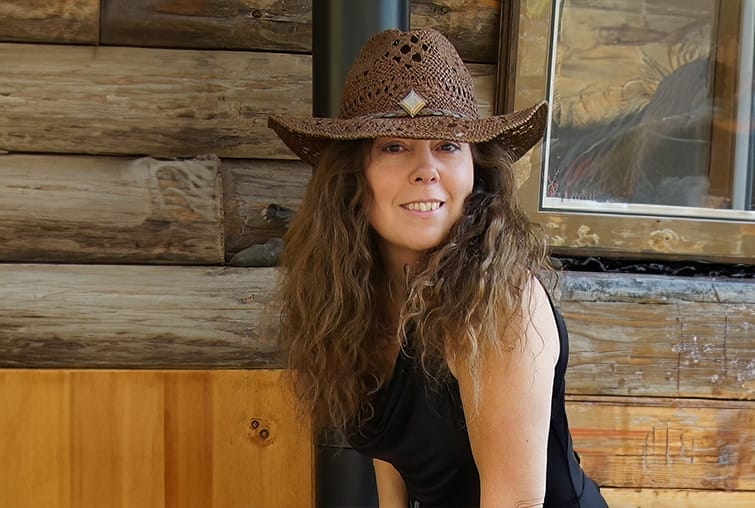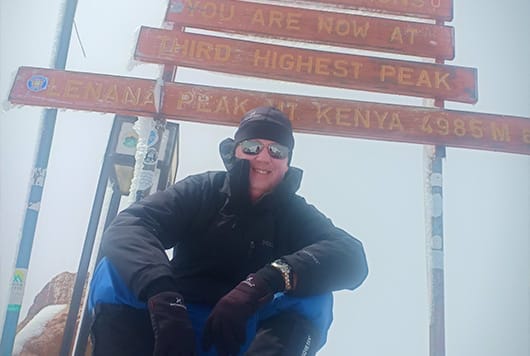Moremi Game Reserve
Moremi, hunted by the Bushman as long as 10,000 years ago, was initiated by the Batawana tribe and covers some 4,871 km2, as the eastern section of the Okavango Delta. Moremi is mostly described as one of the most beautiful wildlife reserves in Africa. It combines mopane woodland and acacia forests, floodplains and lagoons. It is the great diversity of plant and animal life that makes Moremi so well known.
The idea to create a game reserve first originated in 1961 and was approved by the Batawana at a kgotla in 1963. The area was then officially designated as a game reserve in April 1965 and was initially run by the Fauna Conservation Society of Ngamiland. Moremi was then extended to include Chiefs Island in 1976. In August 1979 the reserve was taken over by the Department of Wildlife and National Parks. A further extension was added as recently as 1992 and now the reserve contains within its boundaries approximately twenty percent of the Okavango Delta.
Hippo Pool lives up to its name, as there is an abundance of those creatures in residence. They can be viewed in comfort from an observation platform overlooking the pool. It was near here that the Bugakhwe people used to have their village, but, with the creation of the game reserve, they were moved in 1963 to their present location near north gate, which is known as Khwai Village. The village boasts a population of only about three hundred people. There are a few basic supply stores in the Khwai Village, which can be very useful if one runs out of something or would like the luxury of an ice cold drink! A few of these villagers have attractive basketwork for sale to visitors.
Moremi is best visited in the dry season and game viewing is at its peak from July to October, when seasonal pans dry up and the wildlife concentrates on the permanent water. The winter months of May to August can be very cold at night, but pleasantly warm, under clear blue skies, during the day. From October until the rains break in late November or early December, the weather can be extremely hot – both day and night.
Mosquitoes are prevalent throughout the reserve and it is strongly recommended that visitors should take an anti-malarial prophylactic before, during and for four weeks after their visit, especially during the rainy season. Water for drinking should be boiled or chemically treated.
The reserve enjoys a wide diversity of habitat and is well known for the height of the trees in the mopane tongue, which covers the central area. However, the mainland part forms only about thirty percent of the reserve and is, in many ways untypical – the remaining area being part of the Okavango Delta. Birdlife is prolific and varied, ranging from water birds to shy forest dwellers. Elephants are numerous, particularly during the dry season, as well as a range of other wildlife species from buffalo, giraffe, lion, leopard, cheetah, wild dog, hyena, jackal and the full range of antelope, large and small, including the red lechwe. Rhino, both black and white, were here in the past, but most of the few remaining have been sought out for translocation to the protection of a sanctuary, away from the attentions of illegal hunters. Wild dog, whose numbers are so rapidly dwindling elsewhere, are regularly sighted in the Moremi and have been subject to a project being run in the area since 1989 so these animals are often seen wearing collars placed on them by the researchers. It is claimed that the Moremi area contains about thirty percent of all living wild dogs.
The idea to create a game reserve first originated in 1961 and was approved by the Batawana at a kgotla in 1963. The area was then officially designated as a game reserve in April 1965 and was initially run by the Fauna Conservation Society of Ngamiland. Moremi was then extended to include Chiefs Island in 1976. In August 1979 the reserve was taken over by the Department of Wildlife and National Parks. A further extension was added as recently as 1992 and now the reserve contains within its boundaries approximately twenty percent of the Okavango Delta.
Hippo Pool lives up to its name, as there is an abundance of those creatures in residence. They can be viewed in comfort from an observation platform overlooking the pool. It was near here that the Bugakhwe people used to have their village, but, with the creation of the game reserve, they were moved in 1963 to their present location near north gate, which is known as Khwai Village. The village boasts a population of only about three hundred people. There are a few basic supply stores in the Khwai Village, which can be very useful if one runs out of something or would like the luxury of an ice cold drink! A few of these villagers have attractive basketwork for sale to visitors.
Moremi is best visited in the dry season and game viewing is at its peak from July to October, when seasonal pans dry up and the wildlife concentrates on the permanent water. The winter months of May to August can be very cold at night, but pleasantly warm, under clear blue skies, during the day. From October until the rains break in late November or early December, the weather can be extremely hot – both day and night.
Mosquitoes are prevalent throughout the reserve and it is strongly recommended that visitors should take an anti-malarial prophylactic before, during and for four weeks after their visit, especially during the rainy season. Water for drinking should be boiled or chemically treated.
The reserve enjoys a wide diversity of habitat and is well known for the height of the trees in the mopane tongue, which covers the central area. However, the mainland part forms only about thirty percent of the reserve and is, in many ways untypical – the remaining area being part of the Okavango Delta. Birdlife is prolific and varied, ranging from water birds to shy forest dwellers. Elephants are numerous, particularly during the dry season, as well as a range of other wildlife species from buffalo, giraffe, lion, leopard, cheetah, wild dog, hyena, jackal and the full range of antelope, large and small, including the red lechwe. Rhino, both black and white, were here in the past, but most of the few remaining have been sought out for translocation to the protection of a sanctuary, away from the attentions of illegal hunters. Wild dog, whose numbers are so rapidly dwindling elsewhere, are regularly sighted in the Moremi and have been subject to a project being run in the area since 1989 so these animals are often seen wearing collars placed on them by the researchers. It is claimed that the Moremi area contains about thirty percent of all living wild dogs.
Moremi Game Reserve Accommodation
Moremi Game Reserve Accommodation
Talk to a Specialist
Choose a Safari Specialist in your time zone and start planning your tailor-made safari to Botswana.
Rick McIntyre
Hello, I'm Rick, based in Ontario, Canada, with over 15 years in the travel industry and a passport filled with stamps from over 70 countries. My heart was captured by Africa during my first visit to Kenya, and since then, I've journeyed back repeatedly, exploring the diverse landscapes and wildlife of Kenya, Tanzania, Rwanda, Zambia, Zimbabwe, Botswana, Namibia, and South Africa. Whether you're dreaming of a "once in a lifetime" vacation or you're a seasoned safari traveler, I'm here to assist in planning your perfect African adventure.
You can contact me at rick@gamewatchers.com or give me a call at +1-877-710-3014.

Rachel Chambers
You can contact Rae at rae@gamewatchers.com

Julie Roggow
Julie Roggow
Greetings, I'm Julie Roggow, and I come to you with over two decades of immersion in the world of travel. My journey into the heart of safari adventures began as I traversed Kenya, Uganda, Tanzania, Rwanda, Botswana, Zimbabwe, and South Africa, capturing the essence of these mesmerizing landscapes through my lens. Among these remarkable destinations, Kenya and the Porini safari camps hold a special place in my heart. Their unique blend of wilderness and conservation resonates deeply with me.
My passion for travel is matched only by my dedication to sharing that passion with others. I'm here to ensure that planning your safari vacation is an enjoyable and seamless experience.
Feel free to reach out to me by email at julie@gamewatchers.com or through our toll-free telephone line at +1-877-710-3014.

Wayne Hammond
Wayne Hammond
Hello, I'm Wayne Hammond, and I'm fortunate to have embarked on over 30 incredible journeys to the enchanting continent of Africa. It's a place that has captured my heart time and time again. My travels have taken me to Kenya, which I've had the pleasure of visiting far more times than I can recall, as well as to Tanzania, Zimbabwe, Zambia, Botswana, Rwanda, Uganda, South Africa, and Mozambique. Among my cherished bush haunts, I hold dear the Masai Mara in Kenya, the mesmerizing Mana Pools in Zimbabwe, and the wondrous South Luangwa National Park in Zambia. I'm not just a passionate traveler but also an avid amateur wildlife photographer and an occasional travel writer.
If you're ready to embark on your own African adventure, don't hesitate to reach out to me at wayne@gamewatchers.com or give me a call at +44 7986 978 985.
Andrea Landaeta
Hola, I’m Andrea and my love affair with the captivating world of safaris began during my teenage years when I embarked on my very first safari in Kenya. There, amidst the awe-inspiring wildlife and expansive plains, I found my true passion. Over the years, Kenya has called me back time and time again, leading me to explore its myriad camps, conservancies, and renowned parks. More recently, I've had the privilege of staying at all the Porini Camps, where the spotlight shines on wildlife conservation—a cause close to my heart as I traverse the globe. While Kenya holds a special place in my wanderlust-filled heart, Tanzania, Uganda, and Rwanda have also woven their magic into my soul. If you're eager to embark on your own safari adventure or share your passion for conservation, please feel free to contact me at andrea@gamewatchers.com
Let's connect and embark on a journey through Africa's wild wonders together.
Pranay Chandra
Hello, I’m Pranay Chandra, a veteran of the Indian Armed Forces whose profound passion for nature and wildlife led me to the world of wildlife photography. My lens has captured the essence of the wild, earning recognition in esteemed competitions like the Sanctuary Asia annual wildlife awards and the Natural History Museum’s Wildlife Photographer of the Year awards. Beyond photography, I’ve dedicated myself to conservation efforts, collaborating with Ecological Task Forces and supporting WWF India’s training initiatives in tiger reserves. In the realm of education, I’ve partnered with CEC, New Delhi, to create informative video programs on Human-Wildlife Conflicts. I’ve ventured to Kenya, embracing the splendours of Africa while staying at Porini camps and other renowned lodges.
You can connect with me via email at pranay@gamewatchers.com or by phone at +91 801 788 5256





































